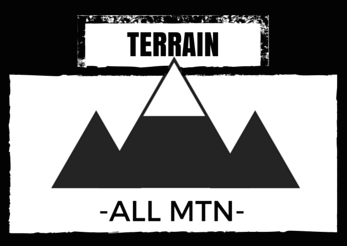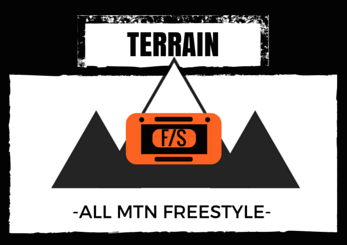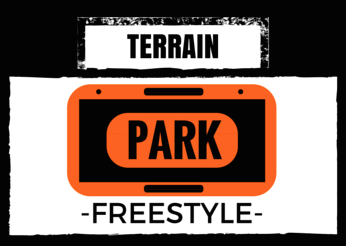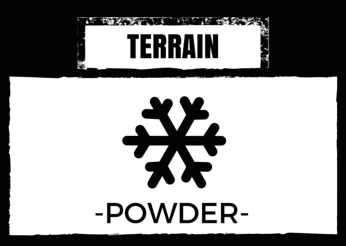SNOWBOARD SIZE GUIDE
How to select your size | In 3 simple steps
1. WEIGHT
The most important aspect in snowboard sizing these days is your weight. In days past, snowboards used to be measured upto the riders chin (based on height), however we now know that a snowboard responds more so to the rider's weight rather than height. In general, the more you weigh, the bigger you need to go in order to get the most out of your board.
We've collated a bunch of snowboard sizing guides to come up with this weight range guide. Remember, weight isn't the only thing you should consider when selecting the size of your board...
Select the size that corresponds to your weight, then keep reading to steps 2 and 3 to really narrow it down.
| SNOWBOARD SIZE (cm) | WEIGHT RANGE (kg) |
| 140 | 40-55 |
| 142 | 45-55 |
| 144 | 45-60 |
| 146 | 45-65 |
| 148 | 50-65 |
| 150 | 50-70 |
| 152 | 55-75 |
| 154 | 60-80 |
| 156 | 65-85 |
| 158 | 70-90 |
| 160 | 75-95 |
| 162 | 95+ |
2. RIDING STYLE / TERRAIN
We suggest either downsizing, or upsizing the length of your snowboard, depending on the type of terrain you ride most, and what you want out of the board.


ALL MOUNTAIN - Sizing is true to weight range guide - You like to ride mostly on groomed runs, but also venture into the trees occaisonally. Anything to do with turning or carving, or basically keeping your feet on the ground, this is you.


ALL MOUNTAIN FREESTYLE - Size down 1-2cm - You ride everything across the mountain including some park.


PARK/FREESTYLE - Size down 1-4cm - You are a true park rat, or learning to be one. You spend most of your day lapping the park hitting jumps, boxes and rails. If you ride mostly jumps then only size down 1-2cm, however if you ride mostly rails, then a shorter board is really beneficial, so feel free to downsize upto 4cm from your recommended size.


POWDER - Upsize 2-5cm - If you're after a straight powder board then you are a lucky person! If you're headed away on an overseas trip to Japan, North America or Europe then a powder board will be your best friend. You want a longer (and preferably rockered) board to allow the nose of the board to float above the deep powder snow. Upsize 1-2cm for rockered powder boards and 2-6cm for cambered powder boards.
***There is one exception... If buying a pure powder snowboard (eg. fish), then do not upsize. Fish snowboards are meant to be ridden a few cm shorter, as they have a set-back stance, allowing effortless float & maneuverability in the trees.
3. ABILITY
This is an easy one. If you are a beginner snowboarder, then go as short as possible for your weight, as this will make it easier for you to maneuver the board, and there is less edge to catch.
If you are an intermediate or advanced snowboarder then the length of your board will mostly depend on the type of terrain you ride. See above for tips on sizing for terrain. In general, advanced riders have more balance and control, and are capable of handling longer, stiffer boards, which have greater edge holding power and are more stable at high speeds.
Here is an example of how to select your size:
1. Weight = 75kg = 156cm
2. Riding Style = All round terrain park rider = Down-size 2cm = 154cm
3. Ability = Intermediate = 154cm
***OTHER CONSIDERATIONS
FLEX
- Beginner snowboarders, look for a softer flexing board.
- Intermediate snowboarders should look for a mid-stiff flexing board.
- Advanced riders should look for a mid-stiff to stiff flexing snowboard.
- Park riders who ride both jumps and rails should look for a mid-flexing park board. Park riders who ride mostly rails should look for a soft flexing park/jib board.
SHAPE
- True Twin snowboards are perfectly symmetrical, and ride equally well switch as they do in your regular stance. Twins make great park boards.
- Directional Twin can mean many things, but they all have a little more drive in your regular stance. They still ride switch well, and are more suited as all-mountain boards.
- Directional boards are set-back, can have tapered shapes and are usually stiffer in the tail than in the nose, providing lots of drive in turns. While they can be ridden switch, directional boards are best suited to groomers, trees, powder and all things natural.
FOOT (BOOT) SIZE
- If you have bigger feet (over 10US mens or 9.5US womens), then you should look for a board that is either mid-wide or wide. If you have big feet, it makes it harder to ride a narrow board, and your toes and heels will poke out over your edge, and create "toe drag" or "heel drag". Mid-wide mens waist widths start from 25.5cm, with wide mens waist widths measure 26.0cm and upwards.
BOARD PROFILE
- These days snowboards come in a variety of base profiles. You may have heard some of the different types, such as rocker and camber. Each profile is suited to different styles of riding.

Fantastic edge hold and pop. Suits intermediate-advanced riders.

Rocker or Reverse Camber is great in many situations. It makes pressing or buttering easier, it provides fantastic floatation in powder, and is less catchy on edge, making it a great base profile for a beginner rider also.
 Flat boards are just what you think, dead flat! They are designed to be playful like a rockered board, while still providing great edge hold.
Flat boards are just what you think, dead flat! They are designed to be playful like a rockered board, while still providing great edge hold.
CHEAT SHEETS
Lucky for you, at The Mountain Garage we condense the 'need to know' information of every board we sell into a "Cheat Sheet". You can find them in the product description of any snowboard you are looking at on our website.

And that's it! Now go forth and browse some snowboards, you've earnt it.
